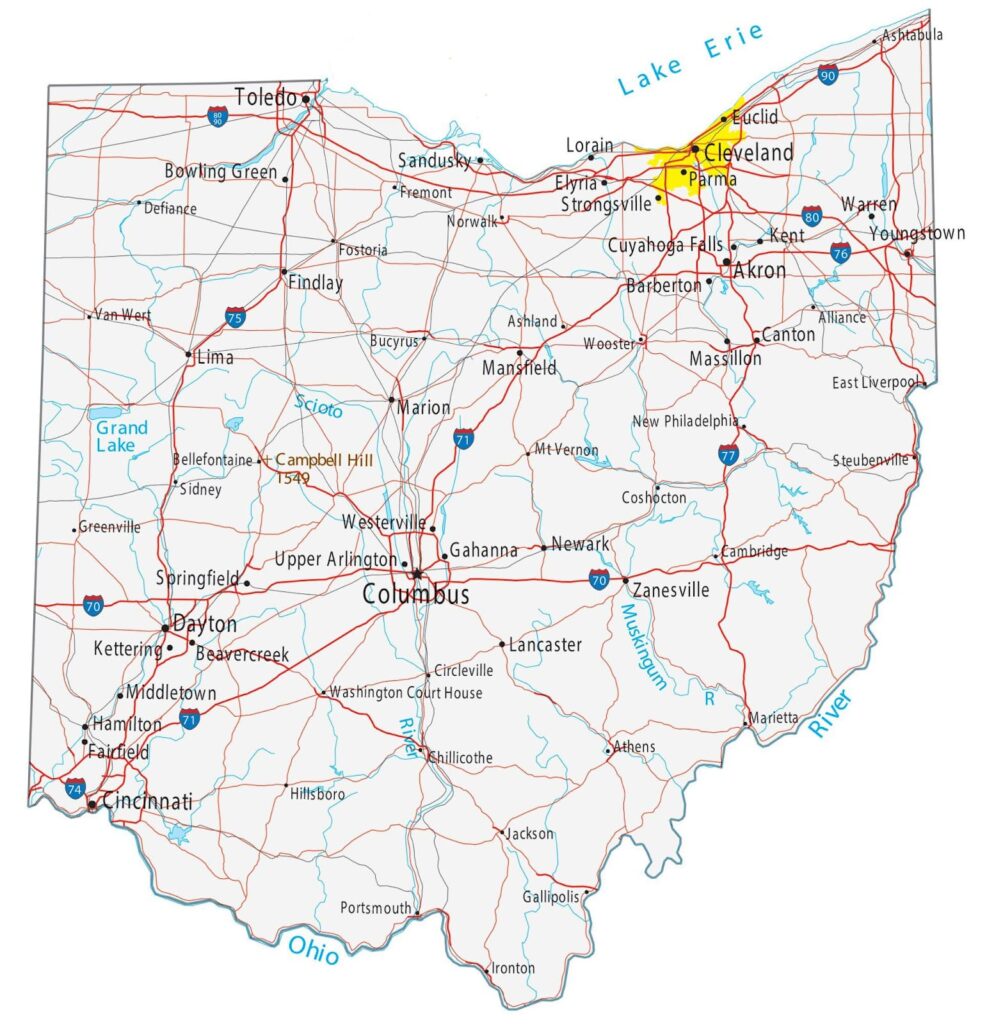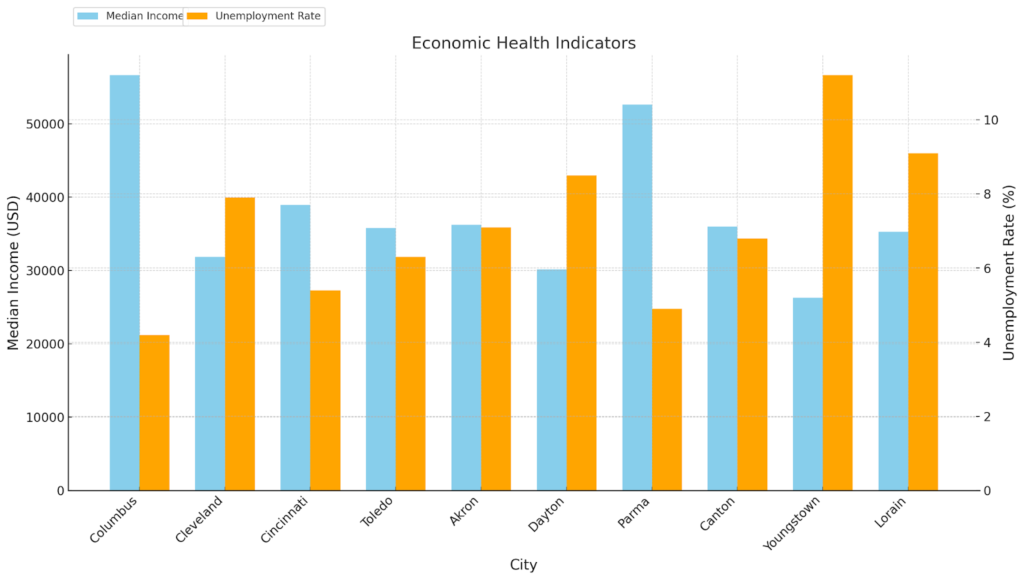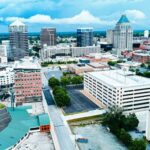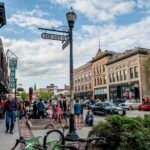
Ohio, known as the Buckeye State, is home to a diverse range of cities that vary in size, culture, and economic activities. The state’s unique position in the Midwest and its rich history have shaped its urban development over the years. This article explores the ten largest cities in Ohio by population, providing insights into their growth, characteristics, and the challenges they face in the modern era.
Overview of Ohio’s Largest Cities
Ohio’s cities serve as economic, cultural, and educational hubs, contributing significantly to the state’s overall prosperity. From the bustling streets of Columbus, the state capital, to the historic neighborhoods of Cincinnati and the industrial landscapes of Cleveland, each city has its unique charm and challenges.
Comparison Table of the 10 Largest Cities in Ohio
| Rank | City | Population | Area (sq mi) | Density (per sq mi) |
|---|---|---|---|---|
| 1 | Columbus | 905,748 | 223.11 | 4,065 |
| 2 | Cleveland | 372,624 | 77.70 | 4,797 |
| 3 | Cincinnati | 309,317 | 77.94 | 3,967 |
| 4 | Toledo | 272,779 | 83.94 | 3,251 |
| 5 | Akron | 197,846 | 62.37 | 3,174 |
| 6 | Dayton | 140,407 | 55.65 | 2,522 |
| 7 | Parma | 81,601 | 20.07 | 4,065 |
| 8 | Canton | 70,872 | 25.48 | 2,782 |
| 9 | Youngstown | 64,958 | 34.60 | 1,877 |
| 10 | Lorain | 63,841 | 24.14 | 2,645 |
Detailed Insights into Each City
Columbus
Columbus, the capital and the largest city of Ohio, stands as a beacon of urban growth and diversity. Its economy thrives through a blend of education, government services, and an expanding technology sector, making it a hotspot for professionals and students alike. The presence of The Ohio State University injects a vibrant youthful energy, fostering innovation and cultural diversity. Columbus also prides itself on its inclusive community, with a rich array of cultural festivals, art scenes, and culinary experiences that reflect its diverse population. The city’s strategic initiatives in sustainability and smart technology further solidify its position as a forward-thinking metropolis, aiming to enhance the quality of life for its residents.
Cleveland
Cleveland, set against the backdrop of Lake Erie, is a city with a storied industrial past that is now steering towards a future of renewal and growth. The city’s cultural wealth, from the renowned Rock and Roll Hall of Fame to its orchestra and art museums, plays a significant role in its identity. Cleveland’s revitalization efforts are evident in its booming healthcare and education sectors, alongside burgeoning tech and creative industries. The city’s commitment to green spaces, with the Emerald Necklace park system, and its investment in sustainable infrastructure, underscore a dedication to enhancing the urban environment for future generations.
Cincinnati
Cincinnati’s charm lies in its unique marriage of historic architecture and modern innovation. This city, nestled by the Ohio River, boasts a dynamic cultural scene, with vibrant music, arts, and a calendar full of festivals that draw both locals and tourists. Its economic landscape is diverse, with strong ties to finance, manufacturing, and education, supported by leading institutions like the University of Cincinnati. Cincinnati’s ongoing urban development projects aim to foster community engagement and sustainability, enhancing its historic neighborhoods while encouraging economic growth. The city’s dedication to arts and culture, including the Cincinnati Art Museum and Music Hall, enriches the lives of its residents.
Toledo
Strategically positioned on the western edge of Lake Erie, Toledo’s identity is deeply intertwined with shipping and manufacturing, particularly its globally recognized glass industry. Beyond its industrial achievements, Toledo is committed to the arts and education, home to the Toledo Museum of Art and the University of Toledo. The city’s waterfront, with the revitalized Toledo Riverwalk, offers leisure and recreational activities, underscoring efforts to leverage natural assets for community benefit. Toledo’s emphasis on innovation, through initiatives like the Glass City Innovation District, aims to drive economic development while preserving its rich industrial heritage.
Akron
Akron has successfully transitioned from its historical roots as the “Rubber Capital of the World” to a center of polymers, healthcare, and education. This transformation is supported by the University of Akron, which plays a crucial role in research and development. The city’s focus on community initiatives, like the Akron Civic Commons project, aims to foster public spaces that encourage social interactions and economic vitality. Akron’s commitment to innovation and sustainability is evident in its support for start-ups and green initiatives, making it a city that not only honors its past but also looks to a future of possibilities.
Dayton
Dayton’s legacy as the birthplace of aviation continues to influence its trajectory, with significant investments in aerospace, technology, and healthcare. The city is home to the National Museum of the United States Air Force, reflecting its deep historical ties to aviation innovation. Dayton’s vibrant cultural scene, supported by institutions like the Dayton Art Institute and the Victoria Theatre Association, enriches community life. Efforts to revitalize the downtown area, including the development of the Water Street District, showcase Dayton’s commitment to urban renewal and economic diversification, ensuring a dynamic and sustainable future for its residents.
Parma
Parma, a suburban enclave near Cleveland, offers a harmonious blend of urban amenities and suburban comfort. Known for its family-friendly atmosphere, the city boasts well-maintained parks, recreational facilities, and a strong sense of community. Parma’s commitment to education and community services reflects its values of fostering a nurturing environment for families. The city’s cultural diversity is celebrated through various community events and local eateries, providing a taste of global cultures. Parma’s strategic approach to development focuses on enhancing residential quality of life while preserving its suburban character, making it an attractive place for families and individuals seeking a balanced lifestyle.
Canton
Canton is celebrated not only for its association with the Pro Football Hall of Fame but also for its rich cultural and historical heritage. The city’s economy benefits from a diverse mix of healthcare, education, and manufacturing, with efforts to spur economic development and innovation. Canton’s vibrant arts scene, including the Canton Museum of Art and the downtown arts district, adds to its appeal. The city’s commitment to community revitalization is evident in projects aimed at enhancing downtown Canton, fostering a lively urban core that attracts residents and visitors alike. Canton’s blend of historical significance and contemporary growth makes it a unique and thriving community.
Youngstown
Youngstown is in the midst of a transformation, shifting from its steel production legacy to a focus on technology, education, and healthcare. The city’s dedication to revitalization is evident in initiatives like the Youngstown Business Incubator, which supports tech start-ups, and the development of the Mahoning Riverfront, enhancing recreational opportunities and quality of life. Youngstown State University plays a pivotal role in the city’s educational and cultural landscape, driving innovation and community engagement. Efforts to preserve Youngstown’s rich industrial heritage, while investing in future growth, reflect a commitment to creating a resilient and vibrant urban environment.
Lorain
Lorain’s strategic position on Lake Erie has historically driven its economy through manufacturing and shipping. Today, the city is focusing on waterfront development and recreational opportunities to revitalize its economy and enhance community life. Initiatives to improve the Black River Landing and expand public access to the waterfront aim to leverage Lorain’s natural beauty for economic and recreational benefits. The city’s commitment to cultural diversity and community events, like the Lorain International Festival, celebrates its rich multicultural heritage. Lorain’s efforts to balance industrial legacy with forward-looking development strategies demonstrate a vision for a revitalized, dynamic future.
Graphical Insights into Ohio’s Urban Centers

Economic Health Indicators: The bar graph juxtaposes the median household income against the unemployment rate for each city, offering insights into the economic disparities and strengths within Ohio’s urban landscape. This visualization helps in understanding the economic vitality and challenges faced by these cities.
Navigating Urban Challenges and Opportunities
Ohio’s largest cities are at a crossroads of tradition and innovation. As they navigate the complexities of urban development, from revitalizing historic neighborhoods to embracing technological advancements, the path forward involves collaborative efforts between local governments, businesses, and communities.
For further exploration into Ohio’s urban planning and development initiatives, visit the Ohio Department of Development (development.ohio.gov) and the Ohio City Planning Conference (ocpc.org), which offer resources and insights into how these cities are shaping their futures.
Conclusion
The landscape of Ohio’s largest cities is a testament to the resilience and dynamic growth of urban centers. By examining the unique characteristics, challenges, and opportunities of each city, we gain a deeper understanding of the state’s evolving urban narrative. As Ohio continues to adapt and grow, its cities remain at the forefront of shaping a vibrant and sustainable future for all its residents.
Last modified: February 29, 2024

